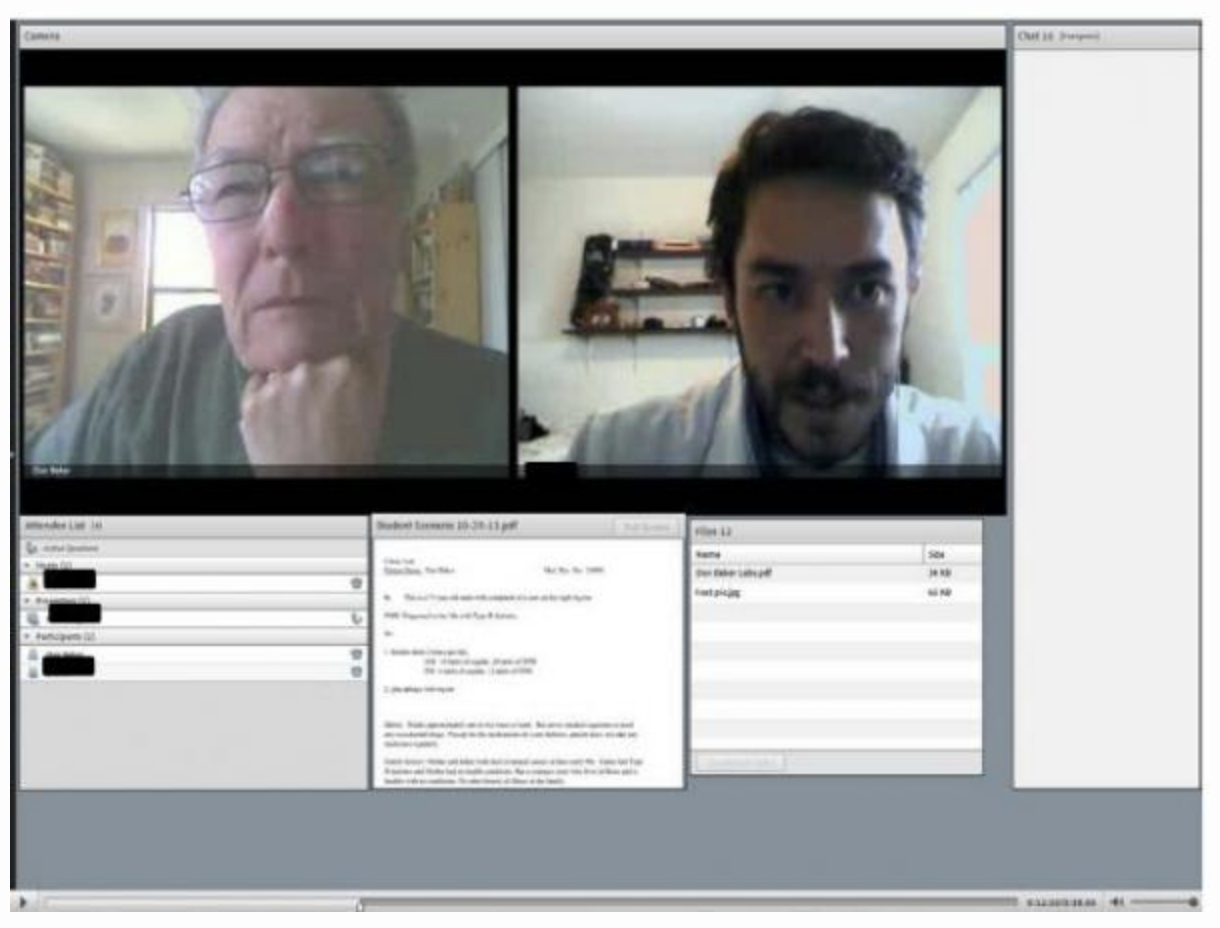The TeleOSCE: Providing Simulated Telemedicine Training for Medical Students
Ryan Palmer, EdD, Oregon Health & Science University
As the use of telemedicine increases, there is a real need to help train future clinicians for this new practice model. The Oregon Health & Science University (OHSU) Family Medicine TeleOSCE addresses this need. The TeleOSCE functions as a formative exam and is administered to third-year medical students completing their 5-week family medicine clerkship at OHSU. Three competency areas are assessed in the TeleOSCE:
1. Clinical knowledge: The patient is a diabetic and is complaining of a foot sore. Students must identify Type II diabetes management issues and recommend appropriate follow-up.
2. Patient-centered use of technology: A technology “stumbling block” is introduced during the encounter to simulate real-world technical difficulties inherent to technology use and patient care. When the learner asks the standardized patient (SP) to describe the appearance of the foot sore, the SP tells the student he uploaded it to the telemedicine interface. A file titled “foot pic” is present on screen, and the student must click on it and download to view. This process will open the picture in a different window on the web browser, so the student must navigate back to the patient screen after viewing the picture. The student’s unfamiliarity with the software is the “stumbling block,” and learners must remain patient-focused while navigating the unfamiliar telemedicine software.
3. Understanding of the geographic and socioeconomic realities of rural patients: The patient lives in a remote part of Oregon, and it is a great burden for him to transport to the closest hospital that is 200 miles away. Additionally, there is not a pharmacy in the patient’s small town, and there are few nutritional options. The student must take this all into account when devising a plan of treatment for the patient.
The TeleOSCE can be implemented virtually with all participants (student, SP, and faculty observer) participating from different locations. It can also be performed “in-person” with the student and faculty observer in one room and the SP joining remotely via a computer screen. Regardless of the configuration, the clinical encounter takes place via the simulated telemedicine interface, in this case an Adobe Connect virtual meeting room (Adobe Connect is a subscription-based virtual meeting platform. Alternative, free videoconferencing platforms, such as Skype, can be substituted). Below is a screenshot of a TeleOSCE session:

Though Adobe Connect is not an actual telemedicine interface, the educational focus of the TeleOSCE is not to train students on the use of a specific telemedicine interface but rather about how to remain patient-centered while using telemedicine. Students learn the core concepts of practicing patient-centered medicine using technology while also getting the novel experience of what a telemedicine encounter is like.
The TeleOSCE has been well received by both students and faculty and remains an ongoing component of the family medicine clerkship at OHSU. The TeleOSCE has been featured in national academic presentations and is a peer-reviewed recommended resource for the Society of Teachers of Family Medicine (STFM) National Clerkship Curriculum. A new TeleOSCE case focusing on depression was recently implemented with additional TeleOSCE cases planned.
The TeleOSCE is freely available for other clinical trainees and practitioners to use on the STFM Resource Library. For questions regarding the TeleOSCE, email Ryan Palmer, EdD [palmerry@ohsu.edu].
Adapted from the original blog post on the Telehealth Alliance of Oregon website.
